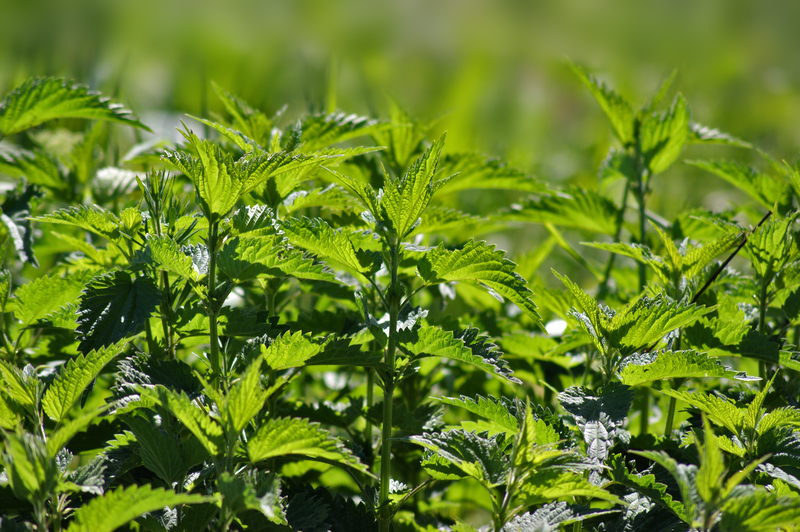Leafy Allies: Gardens in the Fight for Climate
Posted on 15/09/2025
Leafy Allies: Gardens in the Fight for Climate
Gardens are more than just pockets of beauty--they are powerful climate allies. In the growing conversation about climate change, sustainable living, and green initiatives, gardens play an unsung role. Be it your urban balcony garden or a full community green space, these leafy allies quietly but effectively help combat climate change. This article explores the role of gardens in the climate fight, eco-friendly gardening techniques, and how simple changes in your green space can make a global difference.
Gardens: Nature's Climate Warriors
Nature has always adapted to shifting conditions, but human intervention has made climate relief more urgent than ever. Leafy allies such as home gardens, public parks, and community plots:
- Absorb carbon dioxide (CO2), helping to lower greenhouse gases
- Support vital pollinator populations, like bees and butterflies
- Reduce urban heat through evapotranspiration and shade
- Mitigate flooding by improving soil permeability
- Restore biodiversity and improve ecosystem resilience

How Gardens Help Combat Climate Change
Let's break down the main ways leafy gardens act as allies in the fight for climate:
1. Carbon Sequestration in the Soil
Plants take in CO2 and store it in their tissues and roots. Through photosynthesis, gardens become carbon sinks, meaning they retain more carbon than they release. Even small gardens can be efficient carbon traps--a patch of lawn or a row of shrubs can make a meaningful difference over time.
2. Creating Urban Green Oases
Cities are vulnerable to the urban heat island effect, where concrete and asphalt absorb and radiate heat. Gardens act as leafy shields, cooling the air through:
- Evapotranspiration, the process where plants release water vapor
- Providing shade that lowers ambient temperatures
3. Supporting Wildlife and Pollinators
Pollinators are crucial for food security and ecosystem stability. Climate-resilient gardens with native plants offer food and refuge for bees, butterflies, birds, and bats. These creatures, in turn, enable reproduction in countless plant species, supporting biodiversity even in turbulent climates.
4. Flood Management Through Improved Soils
Gardens act like sponges, absorbing rainfall, reducing run-off, and filtering pollutants before they reach waterways. Healthy garden soil--teeming with worms and microbes--boosts this effect, providing natural flood control and improving water quality.
5. Gardens as Educational Hubs for Climate Action
Community gardens become outdoor classrooms, teaching sustainable gardening practices, composting, and fostering a culture of environmental stewardship. The ripple effect from education is long-lasting, influencing generations of climate-conscious citizens.
The Benefits of Climate-Conscious Gardening
When you design your garden with the climate in mind, you:
- Reduce your carbon footprint through plant selection and sustainable practices
- Contribute to local biodiversity by choosing native species
- Minimize your use of artificial fertilizers and pesticides
- Support resilient ecosystems that adapt to climate changes
- Enjoy better physical and mental health from green environments
Top Eco-Friendly Gardening Techniques
Ready to turn your patch of earth into a true climate ally? Here are some practical tips:
1. Choose Native and Drought-Resistant Plants
Native species are adapted to local soil and climate, requiring less water and maintenance. Drought-tolerant plants such as lavender, yarrow, and sedums thrive with minimal resources, making them natural climate warriors.
2. Enhance Soil Health Organically
Use compost and organic mulch to feed your soil, boost water retention, and foster healthy microbial life. Healthy soil stores more carbon and resists erosion--even during heavy rain or drought.
3. Practice Water-Wise Gardening
- Install rain barrels to capture roof runoff
- Try drip irrigation, which targets plant roots and conserves water
- Mulch borders and paths to reduce evaporation
Every drop saved is a step toward a more climate-resilient garden.
4. Minimize Chemical Inputs
Switch to natural fertilizers, encourage beneficial insects like ladybugs, and use compost tea for a nutrient boost. Reducing pesticides not only benefits your garden's health but also limits harmful chemical runoff into waterways.
5. Prioritize Biodiversity
- Plant a diverse array of species, including wildflowers, shrubs, trees, and groundcovers
- Provide habitats: leave small brush piles, plant hedges, install birdbaths
- Rotate crops yearly to outsmart pests and enrich the soil
The more life your garden supports, the more resilient it becomes--both to climate stresses and to pests.
Innovative Approaches: Gardens for Modern Climate Challenges
Rain Gardens
A rain garden is a depressed area planted with water-loving native species. It's designed to catch runoff from roofs, driveways, and streets, slowing the flow and allowing pollutants to settle out. Rain gardens protect local waterways and recharge groundwater, making them a top solution for urban stormwater management.
Green Roofs and Living Walls
For urbanites short on ground space, green roofs and living walls extend the climate benefits of gardens vertically. These structures:
- Improve building insulation
- Support urban biodiversity
- Reduce air pollution and noise
Permaculture Gardens
Permaculture applies natural patterns for sustainable food production. Permaculture gardens use mulching, companion planting, and closed-loop systems to minimize waste and maximize resilience, creating gardens that thrive in changing climate conditions with minimal outside input.
Community Gardens: Leafy Allies for Social and Climate Good
Community gardens provide urban residents with access to green spaces. More than places to grow food, they:
- Strengthen community ties
- Provide local food, reducing emissions from transportation
- Offer learning opportunities on climate-smart gardening
- Deliver food security and nutrition to underserved areas
Across cities worldwide, citizen-led green initiatives have proven vital in responding to heat waves, food shortages, and environmental stress.
Gardens and Food Security
Growing your own produce reduces your carbon footprint. Transporting, refrigerating, and packaging commercial food all generate emissions. By raising fruits and vegetables in your backyard or balcony, you:
- Cut down on food miles and processed packaging
- Eat seasonal varieties that adapt better to climate changes
- Reduce food waste by harvesting only what you need
Leafy Allies in Action: Case Studies
London's Green Belt
London's vast network of public parks, private gardens, and community spaces is known as its "green belt." These leafy allies collectively cool the city by an estimated 2-4?C during summer, reduce ground-level air pollution, and support over 13,000 wildlife species--showcasing how interconnected urban gardens can mitigate citywide climate impacts.
New York's Rooftop Gardens
Rooftop gardens are increasingly common in New York City. These plant-filled skyscraper tops insulate buildings, soak up stormwater, and provide local food--all while increasing pollinator corridors in the urban jungle.

Get Involved: How You Can Make Your Garden a Climate Hero
Whether you have a plot of land, a balcony, or even a sunny windowsill, you can join the fight for climate. Here's how:
- Start a compost pile or worm bin to reduce household waste
- Plant trees and shrubs that endure local climate extremes
- Join a tree-planting or neighborhood garden group
- Favor pollinator-friendly and native species
- Practice organic, water-wise landscaping on your property
Small actions--when multiplied--create powerful results!
Conclusion: Leafy Allies Are the Future of Climate Action
Gardens are much more than recreational spaces--they are vital leafy allies in the fight for the climate. By embracing climate-resilient gardening, biodiversity, and eco-conscious techniques, individuals and communities can amplify the positive role of greenery in environmental protection.
In a rapidly changing world, every garden--no matter the size--serves as a frontline defense in the global struggle for a healthier, more sustainable planet. Grab your trowel and join this leafy revolution: because every green thumb matters in the fight for climate!



